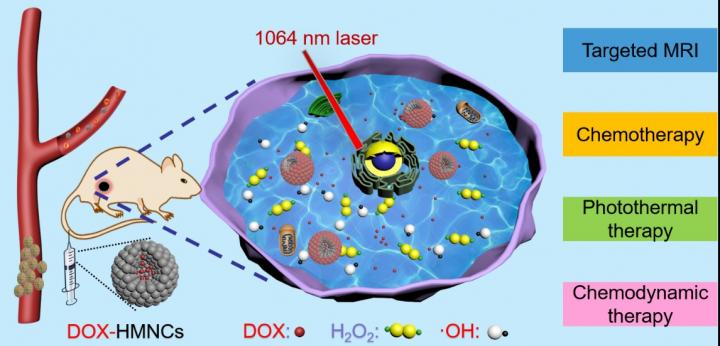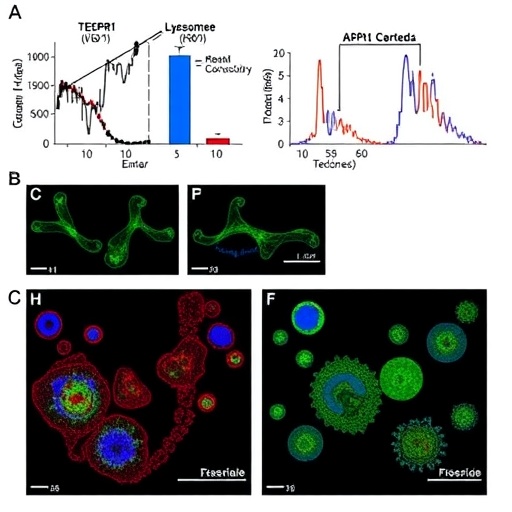
Credit: WANG Hui
As a minimally invasive method for cancer therapy at precise locations, NIR-induced photothermal therapy (PTT) has drawn extensively attention. The therapeutic mechanism is the use of photothermal agents (PTAs) in the treatment of tumors,and its therapeutic effect happens only at the tumor site where both light-absorbent and localized laser radiation coexist.
The development of PTAs with NIR-II absorbance, ranging from 1000nm to 1700 nm, can efficiently improve their penetrating ability and therapeutic effects because of their high penetration depth in the body. Howerever, several disadvantages are associated with these NIR-II responsive PTAs for their use in biomedical areas. Magnetic nanoparticles (MNPs), which boast strong absorption effect in NIR-II, can meet this demand. It has attracted much attention for biomedical applications with its noninvasive imaging function and magnetic-induced targeted ability.
Recently, a research team led by Prof. WANG Hui and Prof. LIN Wenchu of High Magnetic Field Laboratory, Hefei Institutes of Physical Science (HFIPS), the Chinese Academy of Sciences (CAS) reported a new type of NIR-II responsive hollow magnetite nanoclusters (HMNCs), which is made of composed of Fe3O4, mesoporous shell and hollow cavity for targeted imaging-guided combined therapy of cancer.
“HMNC absorbed NIR-II laser and converted it into local heat,” said Prof. WANG, “therefore we successfully accelerated combination of drug release and chemo-photothermal therapy.”
In one-step solvothermal method, they prepared HMNCs with NIR-II absorption at 1066 nm under an external magnetic field (0.5T), which provided photothermal effect on tumor. Besides, as Fe3O4 dissolved in the acid environment, they can convert H2O2 into toxic Hydroxyl radicals, which add chemodynamic effect. What’s more, the hollow cavities in HMNCs are good loading places for drug, which also acted as a targeted contrast agent for tumor magnetic resonance imaging.
Further in vivo experiments proved that the combined effect of photothermal, chemo-therapy and chemodynamic therapy of HMNCs has a significant inhibitory effect on mouse tumor growth.
This experiment showed a kind of multifunctional nanocarriers based on NIR-II responsive HMNCs for trimodal cancer therapy.
###
Link to the paper: NIR-II Responsive Hollow Magnetite Nanoclusters for Targeted Magnetic Resonance Imaging-Guided Photothermal/Chemo-Therapy and Chemodynamic Therapy
Figure 1. Schematic illustration of the HMNCs for targeted MRI, responsive drug release, NIR-II-induced photothermal treatment and chemodynamic therapy. (Image by WANG Hui)
Contact:
ZHAO Weiwei
Hefei Institutes of Physical Science (http://english.
Email: [email protected]
Media Contact
ZHAO Weiwei
[email protected]
Original Source
http://english.
Related Journal Article
http://dx.




